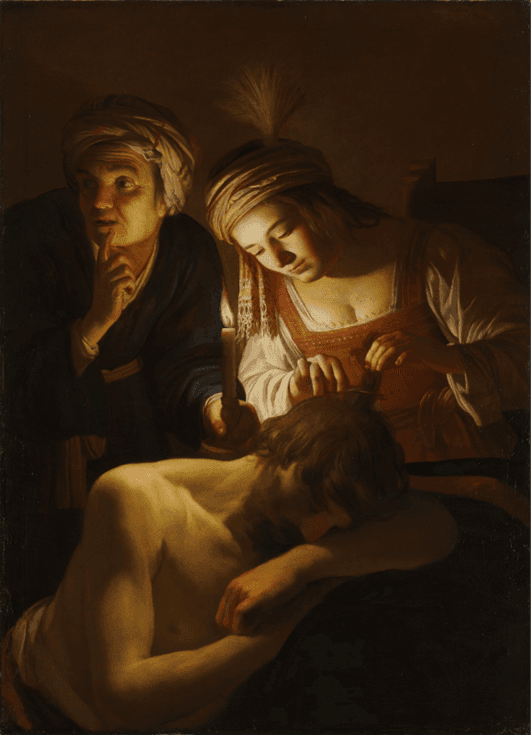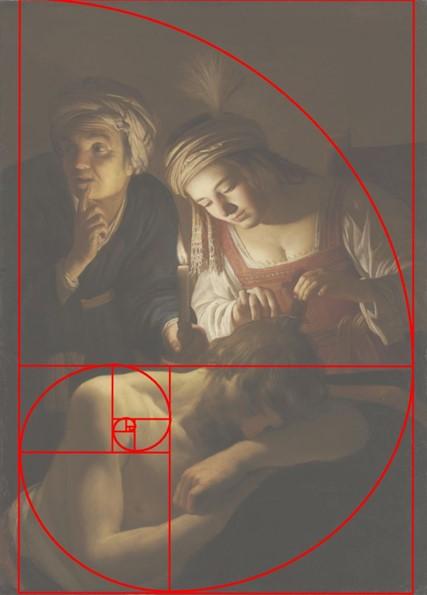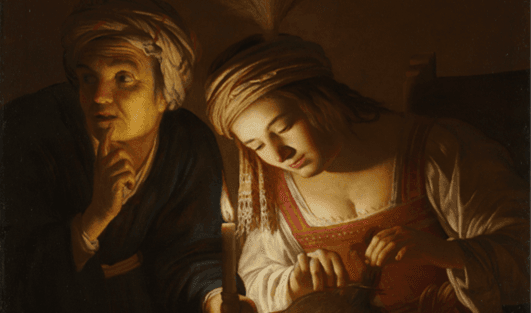Beauty is an inclusive thing. Let me explain. Plato suggests that beauty leads to love because we find beauty in those things that remind us of the heavens, and we truly love our homes in heaven. Yet beauty is not always attached to what is good, and sometimes even the ugliest of things can be presented beautifully.
Beauty is like the adornment that can make anything pleasurable. There are many instances in which beauty and love are manipulated to destroy.
Samson: The Mistakes of God’s Servant
One of those instances occurs in the biblical story of Samson. As the story goes, Samson’s mother was visited by an angel who told her that her son was to be a Nazirite and would deliver the Israelites from the Philistines. Nazirites were those who abstained from pleasures, specifically wine; they were not to touch dead bodies, and they kept uncut hair. They were sometimes thought to be chosen by God and would experience divine ecstasy and other heavenly gifts because of their abstentions.Samson’s story, however, is a cautionary tale: The reader learns about the dangers of going against a heavenly standard. Samson was instructed to abstain, yet he defiled himself multiple times: He not only touched but ate from a lion he killed; he feasted with and married into a Philistine family, which was considered a sin; he killed Philistines with the jawbone of a donkey, and he had relations with several Philistine women.

The most important of these women was Delilah. Samson was always fighting the Philistines, and they tried multiple ways of capturing and enslaving him. Delilah was the one who accomplished the task. She was offered payment to use her beauty to seduce Samson and discover the secret of his divine power.
Delilah seduced Samson to fall in love with her, and after several failed attempts to get him to reveal his secret, she accused him of not loving her because he wouldn’t reveal his deepest truth. Moved by this, Samson finally revealed that his uncut hair was the secret to his divine power. While he slept that night, Delilah cut his hair and called in the Philistines, who captured him, blinded him, enslaved him, and made him grind grain.
The Philistines celebrated their victory over Samson by bringing him out of his prison for amusement at their temple. However, Samson’s hair had regrown over time. He prayed to God to give him the strength to avenge his blindness. He asked the servant, who was leading him by the hand, to let him rest on the column that supported the roof of the temple. There, he pulled down the columns, killing himself, the rulers, and the people of Philistia.
Gerrit van Honthorst and ‘Samson and Delilah’
Gerrit van Honthorst, a 17th-century Dutch painter greatly influenced by Caravaggio, painted a scene illustrating Delilah cutting Samson’s hair. Like Caravaggio in his paintings, Honthorst employs the use of tenebrism, or high-contrast imagery.The composition contains three figures who are seemingly arranged according to the sections and spirals of the golden ratio, a ratio often thought to be aesthetically pleasing even as far back as the ancients. Samson is shown shirtless and sleeping at the bottom. His body and the surface he rests on align with the bottom full-length horizontal line of the golden ratio. He rests his head on his arm and leans into the darkness of the lower right.
Delilah is standing behind Samson. She bends along the golden ratio’s arch as she looks attentively at Samson’s hair and cuts it with scissors. She is illuminated by the light held by her older assistant. The assistant puts her hand to her mouth, revealing a desire to be quiet and secretive. She doesn’t look at Samson or Delilah. Instead, she looks outside of the picture plane, where we can presume the Philistines are waiting to attack.

Not Giving Up On God’s Standard for Us
So what wisdom can we gather from this story and this corresponding painting? To me, there are several points of significance. First, God had already predestined that Samson would free the Israelites from Philistine rule. It was going to happen whether Samson wanted it to or not. Here comes the overlay of the golden ratio: The painting’s composition is preset, and the figures are simply arranged within the preset registers as if they are fated to be there.Yet the question remains: Did Samson’s life have to be as difficult as it was? Could he still have accomplished his divine mission and avoided some of his hardships if he had stayed true to the Nazirite standard and abstained? Or were his mistakes part of the process? I like to think that he could have done better, that he could have fulfilled God’s standard while accomplishing God’s mission for him.
Honthorst’s painting suggests the warnings and consequences of failing to keep God’s standard. In the painting, Samson is only illuminated from the back. The front of his body is kept in the shadows. Might this suggest that Samson has abandoned the divine standard, and his days of seeking pleasure are behind him? That, as a consequence of being tempted by the pleasures of the world, he will be blinded by those same pleasures and spend the rest of his days in darkness?
I think we can associate the light of the candle with the god Apollo. Apollo, the god of the sun and truth, is also the god of appearances and thus the god of beauty. The light of the candle, as that which illuminates the beautiful and the truthful, is here held by the older Philistine woman.
The candle illuminates the beauty of the youthful Delilah but also the aging woman. Delilah, as a representation of beauty, commits her manipulative and deceitful act out in the open. Yet Delilah is the beautiful woman illuminated by the candle representing a truth that is still concealed: the Philistines who are awaiting their moment outside of the frame. The aging woman, however, is hardly beautiful and represents the coming fulfillment of this ugly truth that Delilah’s beauty partially obscures. Here, beauty is the mask that lulls caution to sleep and allows the manipulation of God’s servant.
And there is another very important part of this story: the hair. What might Samson’s hair represent for us today? It wasn’t Samson’s hair that made him powerful. It was that his hair had never been cut. The length of his hair, for the whole of his life, was never depleted—that is, until he met Delilah.
To me, the story suggests the consequences of lust. Despite all of his other sins, it was lust that finally resulted in his hair being cut and his loss of divine power. It was lust that drove him to have relations with a Philistine woman out of wedlock, despite his Nazirite vow. Could his cut hair correlate with the depletion that occurs as the result of lust, a depletion that wastes away his divine energy and puts him to sleep to experience a darkness from which he will never awaken? Is it lust that separates him from God?
A Standard of Beauty
Now, I return to Plato. In “Phaedrus,” Plato suggested that beauty reminds us of the heavens. Yet Plato was also worried about the dangers of beauty and even suggested excommunicating the poets from the Republic for fear that they might make beautiful what ought to be ugly. Ugly things can wear beautiful masks and entice those even on divine missions. Samson fell victim to this very thing; ugly intentions coincided with the ugliness of his lust, and fulfilling his mission was more difficult because of it.Our world cannot exist without beauty. Maybe Plato is right, and we remind ourselves of heaven when we find and appreciate the truly beautiful despite the world’s inadequacies. Yet this pursuit of beauty is bubbling with temptation and its destructive tendencies. How might we keep God’s standard as we navigate our seductive world while still appreciating the beauty that we witness around us?
Have you ever seen a work of art and thought it was beautiful but had no idea what it meant? In our series “Reaching Within: What Traditional Art Offers the Heart,” we interpret the classical visual arts in ways that may be morally insightful for us today. We try to approach each work of art to see how our historical creations might inspire within us our own innate goodness.
Would you like to see other kinds of arts and culture articles? Please email us your story ideas or feedback at [email protected]







